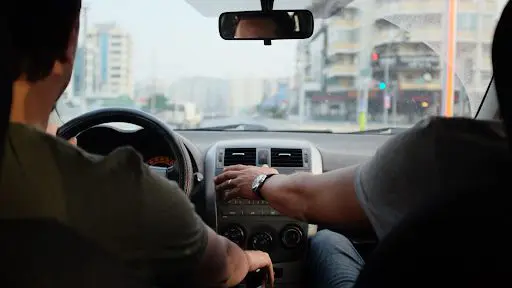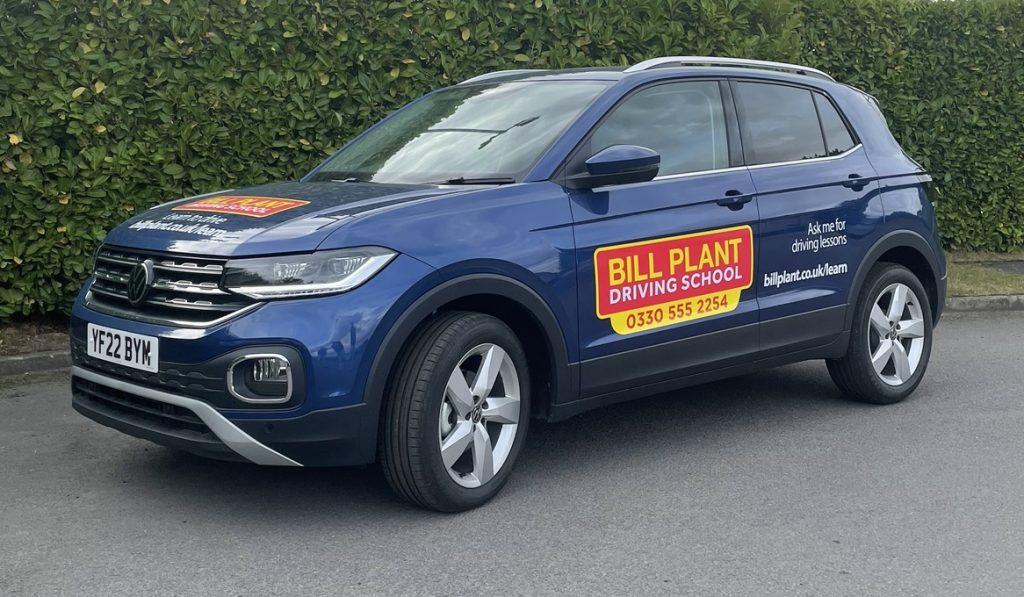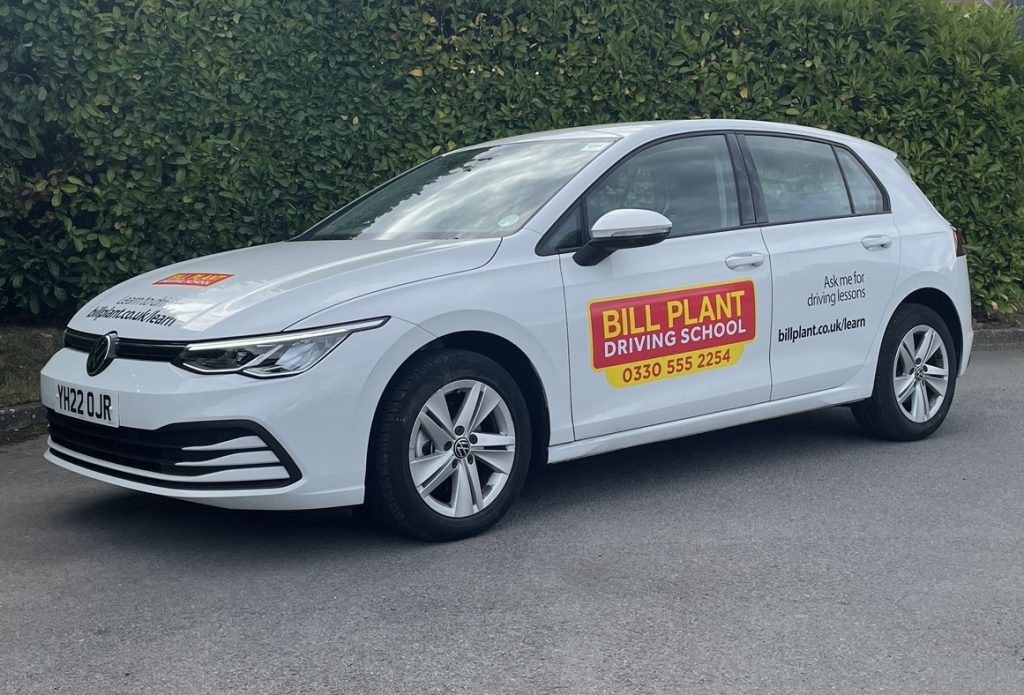
Being unsuccessful at anything is never a nice feeling, but taking a positive attitude to bounce back goes a long way to ensuring future success. We’ve put together everything you need to know about failing your driving test and the steps you can take to ensure you have the best chance of getting that pass next time around.
How many times can I fail my driving test in the UK?
Fortunately, there is no limit on the number of times you can fail your practical driving test. As people learn differently, some may pass the first time, while others will need several attempts in order to get through.
Despite having unlimited attempts at your practical driving test, it is always best if you are unsuccessful to thoroughly review the email you receive from the DVSA when your test is complete before rushing to rebook.
The report summarises your driving test faults into specific categories for different fault types. By sharing this with your instructor and speaking with them to understand how and why you failed your exam, you’ll be best placed to pass the next time you take your test. Looking through the faults and working with your instructor to improve these areas moving forward is the best approach to take.
Additionally, learners should be aware that if they do not pass the practical driving test by the time their theory certificates have expired, they will have to pass their theory exam again before being able to sit another practical driving test. A theory certificate is valid for 2 years from when you pass your theory test.
Booking your driving lessons with expert driving instructors, who are DVSA registered, will help to get you up to test standard as quickly as possible.
How long after failing my driving test can I rebook?
You are able to rebook your practical driving test 10 working days (2 weeks) after the day that you failed your exam. The reason for the minimum 10 day period is to make sure that you have enough time to work with your driving instructor and receive the adequate amount of training that you need to maximise your chances on the following attempt.
It is also worth noting that some driving test centres, especially the larger and/or busier ones, will have a longer waiting time (this may be further increased by factors including the COVID-19 backlog).
What shall I do after failing my driving test?
The first thing that you need to do is not give up! The national average for passing your practical test has been roughly 50% for a very long time, with recent increases since the start of the pandemic in the months that lessons have been allowed (with fewer overall tests). This means you shouldn’t feel too disheartened if you do not pass, as passes and fails are generally close to a 50/50 split.
It may be the case that you were just unfortunate, perhaps you were forced into a particularly difficult situation by other road users which caused you to fail. Whatever the reason, you’ll now know what to expect on your driving test, which will help ensure that you’re less nervous this time around and more familiar with the overall exam structure.

UK Driving Test Pass Rates and Tests Conducted – Source: Gov.uk
We understand that it may be hard to hear that you’ve failed your test on the day, but as long as you read the examiner’s feedback and then work with your driving instructor to cover the areas that need improvement, you’ll be in a great position. If you consider your failed attempt as a learning experience, and constructively develop a plan to address the issues that you experienced, you’ll have much greater confidence in getting your pass certificate.
You should also get out and practice with family and/or friends as much as possible, as private practice has been shown to improve pass rates, even if just for a few hours on topics such as manoeuvres.
Driving tests and Covid-19
As driving lessons and tests were prohibited to take place throughout periods of national lockdown, a significant backlog was created with over 420,000 practical driving tests in the pipeline when lessons resumed in April 2021. The DVSA, who conduct all of the assessments, are trying to get through the backlog as quickly and as efficiently as possible.
To help reduce driving test wait times and the overall backlog, it is important to note that you will now be brought back to the driving test center immediately if you commit a serious driving fault. This means that unlike pre-pandemic, you will no longer be required to finish the exam should you have already failed.
What will make me fail my driving test?
There are two main factors that will cause you to fail your practical driving exam:
Accumulating more than 15 minor driving faults
Minor driving faults are classified into categories including car control, car positioning and use or mirrors. While you can amass up to 15 of these, if you keep making the same mistake, it could then be classified as a serious fault, causing you to fail your test. This happens when you receive 3 or more of the same minor driving fault.
Commit a major driving fault
This involves committing a fault that actively puts either yourself, the examiner, the public or property in a potentially dangerous situation.
The DVSA has published a full list of reasons for why people fail their driving test which contains information on the nature of the faults that lead to test failures. Our guide to the most common driving test fails also covers this in more detail.
How many minors to fail driving test?
There are plenty of minor driving faults that sit within individual categories, ranging from:
Not checking mirrors frequently enough
This is the most common cause of failing a test outright. You need to always check your mirrors whenever making any manoeuvre or changing speed or direction.
Stalling the car
This is one of the most common driving test errors and can happen even to experienced drivers! Stalling will be marked as a minor driving fault as long as it does not put you or the examiner in a dangerous position (E.g. on a roundabout or pulling out of a junction).
Touching the kerb
Touching a kerb is minor driving fault but if you mount the kerb with any of your wheels this will be a major and cause you to fail your driving test
Show me, Tell me
At the start of your exam you will be asked one of the following from your examiner:
A ‘Show me’ question is where you show the examiner how you would perform a safety task while you are driving, for example how to wash your windscreen.
A ‘Tell me’ question is where you tell the examiner how you would perform a task before the test for example where you would find how much pressure to put in your tyres
If you can’t answer either one or all of these questions this will result in just one driving test minor.
What is classified as a major fault? Instant fails on your driving test:
There are several driving faults that you can commit which would cause you to immediately fail your driving test. Some examples of these are:
Failing to judge the speed of an approaching vehicle
If you are at a junction and fail to gauge the speed of an approaching vehicle and pull out when it is unsafe to do so either causing the approaching vehicle to change speed or the examiner having to use the dual controls
Not using mirrors when exiting a roundabout
When you are exiting a roundabout you will need to check your centre and side mirror to make sure it is safe to do so. If you do not do this, it will cause you to receive a major driving fault.
Trying to change lane on a roundabout when a vehicle is directly alongside
If you are on a multi-lane roundabout and you try to change lanes without making the correct observations and there is a vehicle beside you and they either need to move to avoid a collision or the examiner has to use the dual controls to stop the car.
Not steering enough when going around a bend
When you drive around a bend you do not turn the steering wheel enough causing the passenger side wheels to mount the kerb.
Steering late when moving out to pass parked vehicles
When you are approaching a parked car you do not leave yourself enough space and steer too late and get too close to the parked car.
Can you drive straight after passing your driving test?
The short answer is yes! When you pass your driving test your examiner will ask you if you would like to receive your full driving licence immediately. If you choose to do this, you’ll have to hand your provisional licence over there and then and they will thereafter process your application and have it sent to you in the post.
If you do not wish to get your licence automatically, you can instead apply for your full licence by post (although you must ensure to apply within the first 2 years of passing your test or you will have to take your practical exam again!)
You will then receive your new licence back within 3 weeks, but you can still legally drive independently before this arrives. The only thing you will need to remember is that you will need to take out new car insurance, as your learner insurance will no longer be valid.
There are several providers for new driver insurance in the market and it is absolutely vital that you have this arranged in order to legally drive. A good starting point would be looking at potential suppliers such as MyFirstUK, where you’ll receive £100 off your annual cover by using the code BILLPLANT100 in the referral box.
For more preparation before your test, read our top tips for passing your driving test guide.

